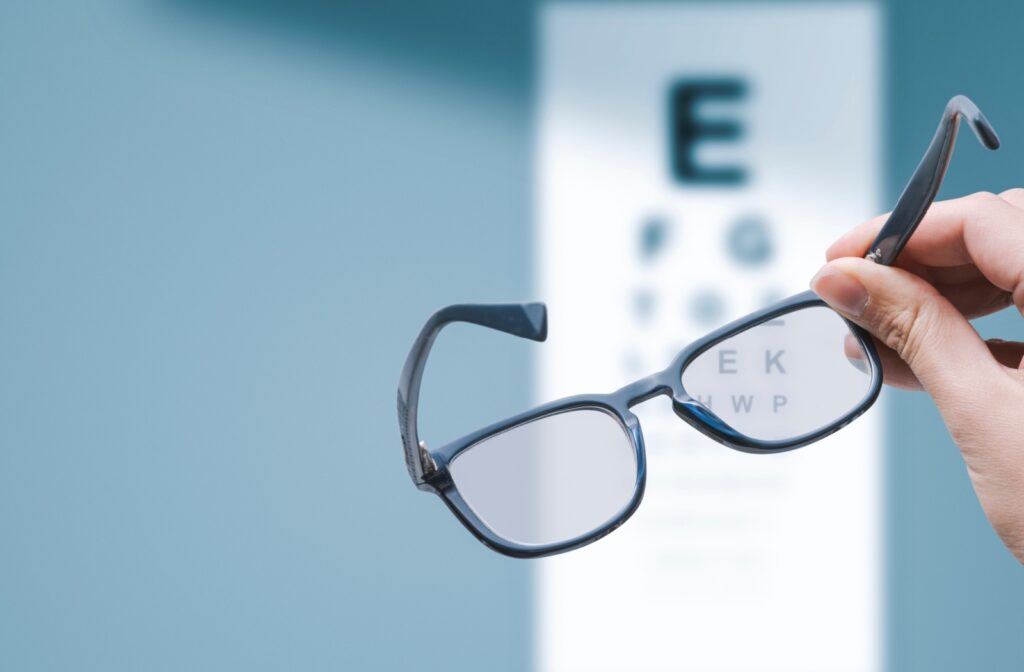In today’s world, where screens dominate our daily lives, maintaining good vision is essential. Among the various vision issues, two of the most prevalent are myopia (nearsightedness) and astigmatism.
While many people may experience one of these conditions, it’s entirely possible—and not uncommon—to have both simultaneously.
What Are Myopia & Astigmatism?
Myopia
Myopia, often referred to as nearsightedness, is a refractive error characterized by difficulty seeing distant objects clearly while nearby objects typically remain in focus.
This condition arises when the eye’s shape causes light rays to focus in front of the retina rather than directly on it. Factors contributing to myopia include:
- Genetics
- Prolonged near-work activities
- Environmental influences
Astigmatism
Astigmatism occurs when the cornea (the clear front surface of the eye) is not perfectly spherical. Instead of having a uniformly curved surface, it may have an irregular shape, resembling a football rather than a basketball.
This irregular curvature results in blurred or distorted vision at all distances. Astigmatism can occur alongside myopia or hyperopia (farsightedness) and is often present from birth.
How Do Myopia & Astigmatism Coexist?
The coexistence of myopia and astigmatism is known as mixed vision conditions, which is relatively common. Both issues arise from how the eye refracts light, but they originate from different structural characteristics of the eye. Many people with myopia also have some degree of astigmatism, which can complicate their vision further.
Understanding this coexistence is important, as it affects how people experience their vision. Those with both conditions may find that even when they use corrective lenses for myopia, they still experience blurriness due to astigmatism, making a comprehensive eye exam essential for effective management.
Recognizing the Symptoms
Being aware of the symptoms of myopia and astigmatism can help people seek the right care. Common symptoms include:
- Blurred or distorted vision: People may notice that both distant and nearby objects appear unclear, which can be frustrating and distracting.
- Eye strain: Prolonged periods of trying to focus, especially during tasks like reading or using a computer, may lead to discomfort and fatigue.
- Headaches: Strain from constant squinting or difficulty focusing can result in frequent headaches.
- Difficulty with night vision: Those with myopia and astigmatism may struggle more in low-light conditions, finding it challenging to see clearly.
Diagnosis
A comprehensive eye exam can help accurately diagnose myopia, astigmatism, or both. During this exam, the following procedures may be conducted:
- Visual acuity tests: These tests measure how well you can see at different distances. The results can help determine the degree of refractive error.
- Refraction tests: Using a series of lenses, an eye care professional can pinpoint the exact prescription needed for corrective lenses. This process is important for both myopia and astigmatism, as the prescription might differ based on the specific conditions.
- Keratometry or corneal topography: These tests measure the cornea’s curvature, allowing the eye care professional to assess any irregularities contributing to astigmatism.
Knowing whether you have myopia, astigmatism, or both allows you to take informed steps toward better vision.

Treatment Options for Myopia & Astigmatism
Once diagnosed, various treatment options are available to help manage these conditions effectively. Here are some of the most common approaches:
- Eyeglasses: Prescription glasses are one of the simplest and most effective solutions for correcting myopia and astigmatism. Lenses can be tailored to your specific needs, providing clear vision without the hassle of contact lenses or surgery.
- Contact lenses: Toric lenses are specially designed to correct astigmatism. They have different powers in different meridians to account for the irregular curvature of the cornea. Additionally, multifocal contacts are available for those who may also need correction for presbyopia (age-related difficulty focusing on close objects).
- Refractive surgery: Procedures like LASIK or PRK reshape the cornea to correct refractive errors, offering a long-term solution. These surgeries can provide significant freedom from glasses and contact lenses, though not everyone is a suitable candidate.
- Orthokeratology: This innovative approach involves wearing specially designed contact lenses overnight to temporarily reshape the cornea. This allows for clear vision during the day without needing corrective lenses, making it an attractive option for those who want to avoid glasses or contacts during waking hours.
- Vision therapy: Vision therapy may be beneficial for some people, especially children. This program includes exercises and activities designed to improve visual skills and comfort.
The Importance of Regular Eye Care
Regular eye examinations are important for maintaining good vision and overall eye health. Even if you are not experiencing noticeable symptoms, periodic assessments can help detect issues early on, allowing for timely intervention.
Our Camarillo Vision Center team is dedicated to helping you understand your vision health, offering personalized treatment plans that suit your lifestyle. If you suspect you have myopia, astigmatism, or both, book an appointment today.



